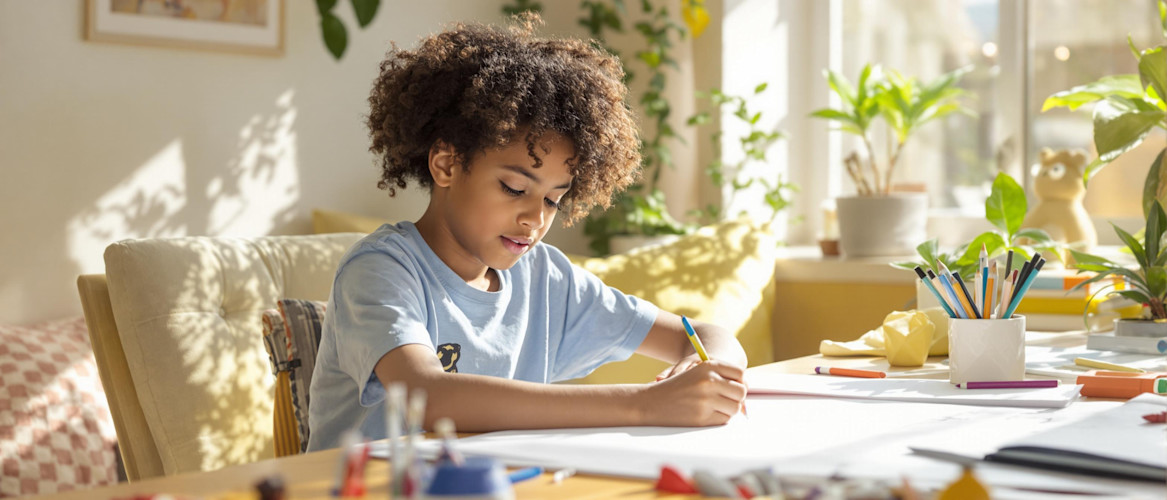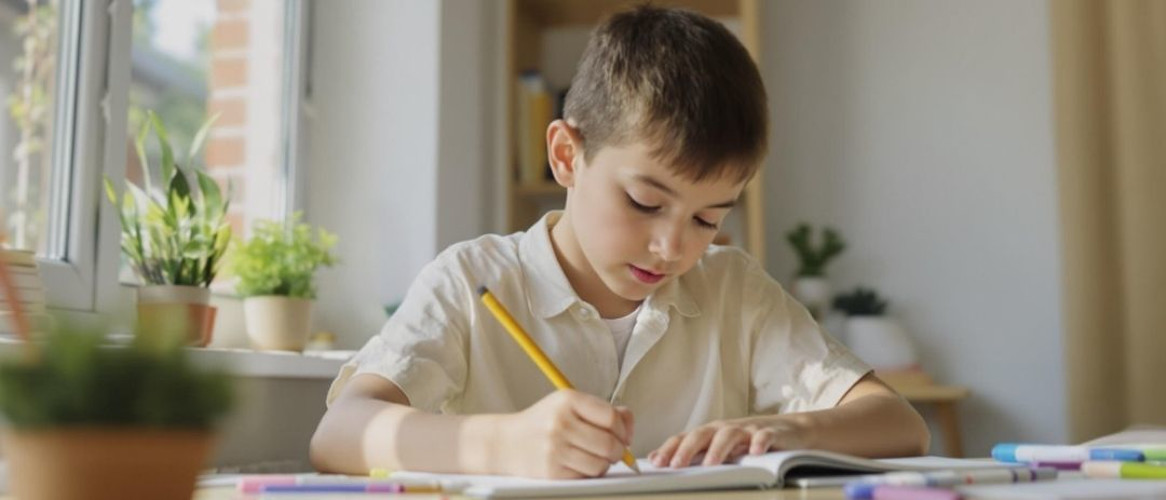U.S. History is a rich and fascinating topic that offers children a window into the people, ideas, and events that have shaped the nation. From the ideals of freedom and democracy to the complex stories of everyday life, exploring the past helps learners better understand the world they live in today.
There are many ways to make History engaging, whether through storytelling, hands-on projects, games, or creative discussions. With a flexible, learner-centered approach, families can help children build curiosity and critical thinking while exploring the past meaningfully. At Outschool, you’ll find classes and resources designed to bring U.S. History to life for learners of all ages!
Understanding the key concepts of U.S. History
U.S. History is as complex as it is wide. From the experiences of Indigenous people to immigration, civil rights, and modern movements, these stories help learners understand how the world around them has evolved.
When teaching U.S. History, keeping a few big-picture ideas in mind is helpful. The concepts below are suggested learning points that can give learners a strong foundation as they explore the nation’s past:
- Explore key American ideals: Invite your learner to think about freedom, democracy, equality, and justice, and how these big ideas have shaped and continue to shape the nation.
- Trace major eras and turning points: Help your learner follow the flow of U.S. History through significant periods like colonization, the American Revolution, westward expansion, and the Civil War, noticing how each era built upon the one before it.
- Include diverse perspectives: Look for opportunities to highlight voices and experiences often left out of traditional narratives, Indigenous peoples, immigrants, African Americans, women, and others who have helped shape American life.
- Think about cause and effect: Prompt your learner to ask why events happened, what came were the results, and how big movements and everyday choices can ripple through history.
- Notice change over time: Explore how American society, culture, and laws have shifted and invite your learner to reflect on what changes they might see in their lifetime.
You don’t need to cover everything at once, or even cover it all; weave these ideas naturally into your lessons and discussions over time. As you introduce these key concepts, remember that history is a living, ongoing story. Encourage your child to ask questions, make connections, and reflect on the values and experiences that continue to shape American life.
Nurturing critical thinking in history
One of the most valuable skills children can build through studying U.S. History is learning to think like a historian. This means asking how we know what happened and why it matters, not just memorizing events. You can encourage this mindset by exploring who created a source, what perspective it offers, and what voices might be missing. Simple activities, like comparing different accounts or studying old photographs, help kids practice these skills in fun, approachable ways.
History isn’t just a list of facts; it’s a story shaped by interpretation and context. Invite your child to consider how different people experienced the same events, to think about cause and effect, bias, and how the past connects to today’s world. These habits help children become thoughtful, informed learners and make history feel more alive and meaningful.
Interactive and engaging activities for history classes
When learners actively participate in history, they move beyond memorizing facts and build real connections with the past. Interactive projects spark curiosity, creativity, and critical thinking, whether your child loves art, storytelling, technology, or hands-on learning. These types of activities invite young historians to experience history in ways that feel both fun and meaningful.
For ages 8-11:
- Design a historical newspaper using art supplies or simple digital tools. Learners could report on significant historical events like the First Thanksgiving or the Wright brothers' flight, combining creativity with research skills to explore these stories with other young historians.
- Create “history in a box” collections. Learners may gather everyday objects or simple crafts to represent key items from a historical period, such as a pioneer’s travel trunk or a soldier’s pack from the Revolutionary War.
For ages 11-14:
- Using shoe boxes and craft materials, learners could create historical scene boxes. They recreate moments like Colonial village life or Ellis Island arrivals, making distant events tangible.
- Record mini-podcasts about local history. Learners could research their community's past, interview family members, and share discoveries through engaging audio stories.
For ages 14-18:
- Host historical figure press conferences. Learners could research and embody characters like Benjamin Franklin or Rosa Parks, answering questions from peers or parents.
- Design digital history games using free tools like Kahoot or Quizizz. Learners could create interactive quizzes and choice-based adventures about different historical periods, perfect for learners who enjoy technology.
The beauty of these activities is that they can be adapted to suit your learners’ interests and style. Whether working independently or alongside peers, learners gain a deeper appreciation for how history has shaped their world. With each project, they aren’t just studying the past but bringing it to life.
Ideas and tools for exploring U.S. History
One of the best parts of teaching U.S. History today is the wealth of engaging resources available to support learning at home or in the classroom. Whether your child enjoys reading, interactive games, or live classes, there are countless tools to help bring the past to life. The following suggestions can help you get started as you build a rich, flexible learning experience that fits your child’s interests and needs.
- Primary sources: Explore original documents, letters, photos, artifacts, and old newspapers through resources like the Library of Congress and National Archives. These materials help learners connect with history through authentic voices and objects from the past.
- Interactive online classes: Platforms like Outschool offer live, small-group U.S. History classes for various ages and interests, perfect for children who enjoy learning with others.
- Historical learning games: Games like Mission US allow learners to experience historical events through interactive storytelling and role-playing, an excellent way to make history come alive.
These resources are just starting points; the most meaningful learning happens when you and your child explore history together, ask questions, and follow their curiosity. Don’t be afraid to mix materials, revisit favorite activities, or dive deeper into topics that spark your child’s imagination. The more you nurture that sense of wonder, the more rewarding your history journey will be.
Addressing frequently asked questions (FAQs) in history education
As you guide your child through U.S. History, it’s natural to have questions about what to teach, how to adapt lessons, and how to keep learning enjoyable. Every family’s journey with history looks a little different. This FAQ section offers helpful tips and ideas to support you, no matter your child’s learning style or experience level.
How can I help my child connect with historical events?
Start with stories that match your learners' interests. If they love sports, explore how baseball helped shape American culture. For an art lover, dive into historical photographs or paintings from different eras. Using real documents, letters, and images helps history feel personal and alive; it’s not just about reading facts, it’s about experiencing the lives of real people from the past and fostering independence.
How can I adapt history lessons to fit my learners' style?
Every child has their learning style, and history offers many ways to adapt. Visual learners might enjoy drawing timelines or making comics based on key events. Hands-on learners can build models or recreate artifacts. Auditory learners might love listening to historical speeches or recording their mini-podcasts. The goal is to make history feel approachable in whatever works best for your child.
What if my child thinks history is boring?
Start by making it personal. Old family photos, relatives’ stories, or even objects around your home can become fascinating history lessons. Kids are often more engaged when they see how the past connects to their lives. You can also tie historical events to current topics your child already cares about; this helps them see that history isn’t something distant but still shapes the world today.
Do I need a formal U.S. History curriculum?
A structured curriculum can be helpful, especially if you’re new to teaching history or want a clear path. But many families successfully blend different resources, books, online classes, primary sources, and hands-on activities to create a more flexible, personalized learning experience. The best approach fits your child’s learning style and sparks their curiosity.
How can I support my child with additional needs to learn U.S. History?
The key is to make history flexible and accessible. Break lessons into smaller, manageable steps and use a mix of visuals, hands-on activities, and storytelling to support different learning styles. Allow extra time for projects and discussions, and offer choices in how your child shows what they’ve learned, such as through art, recorded presentations, or simple oral retelling. Most of all, focus on making history enjoyable and meaningful.
Stay flexible, follow your learner’s interests, and don’t be afraid to try new approaches along the way. With time and creativity, history can become one of the most rewarding subjects you explore together.
Make history come alive for every learner
Teaching U.S. History is more than covering a list of events; it’s about helping learners ask questions, think critically, and see the connections between past and present. By exploring a wide range of stories and perspectives, you can help your child understand the complexities of history and develop empathy for the experiences of others. With flexibility and creativity, history can become one of the most engaging and rewarding subjects in your learning journey.
Every child connects with history in their way, whether through hands-on projects, lively discussions, or personal stories. The key is to make space for curiosity and discovery, allowing your learner to explore history at their own pace and in ways that inspire them. At Outschool, various classes will support and enrich your U.S. History journey.


.svg)
.svg)







